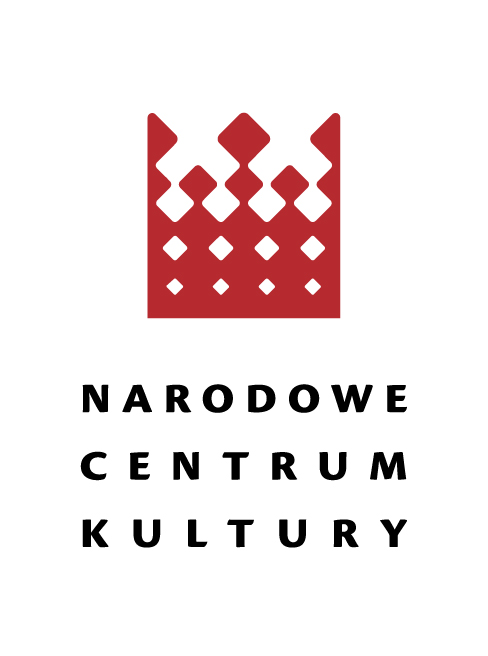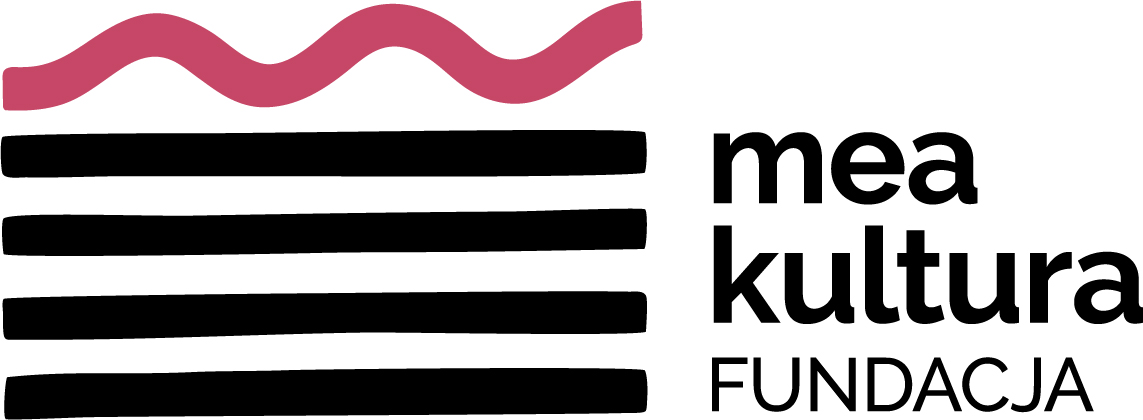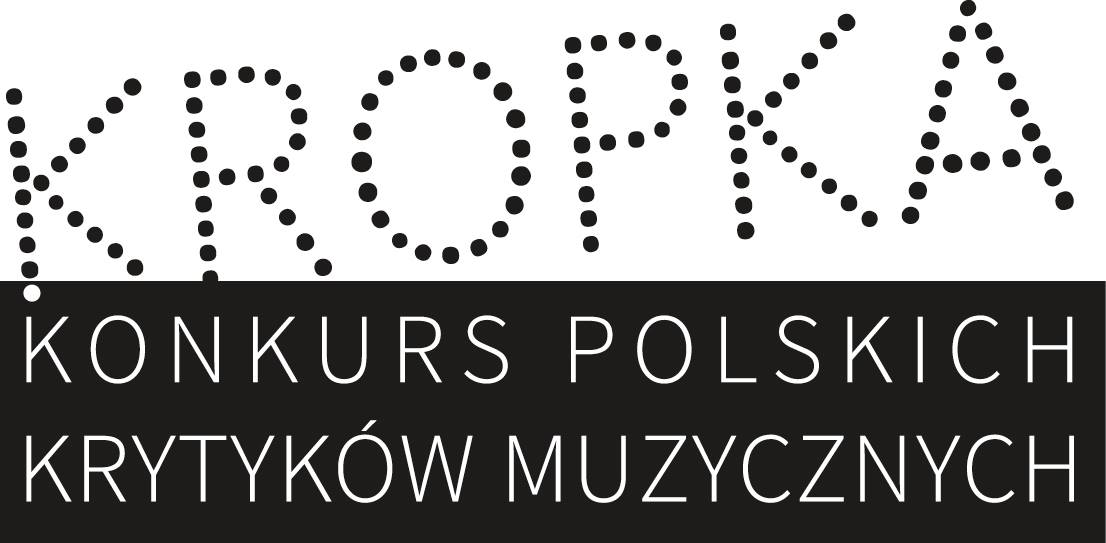The most radical and experimental art movement of the sixties[1]
Fluxus is an international and interdisciplinary artistic collective (or network) established in the 1960s and 1970s. Composers, painters, poets, designers – merging, exploring, overlapping media, disciplines, art fields and topics – it was their signature. In addition, representatives of Fluxus were not only artists in a classic term, but economists, chefs or mathematicians[2] as well. However, experimental artists who were taking part in Fluxus events and activities, had different ideas about Fluxus itself[3]. In fact, they had diversified ideas about art and society as well. This diversity of ideas is a great reflection of art created by Fluxus.
1.1 The influencers
In order to put emphasis on the connection between Fluxus and experimental music, we need to bring fractions to a common denominator – John Cage.
Cage had a great impact on Fluxus, in particular the performance of 4’33’’ in which the roles of silence and music were drastically changed. As well, the involvement of viewer and unknown output of the piece, in other words the indeterminacy in art, was heavily influenced by Cage. Last but not least – the importance of process rather than finished product became a signature of Cage, and then of Fluxus.
[youtube_sc url=JTEFKFiXSx4]
Some artists (i.e. La Monte Young, George Brecht) involved in Fluxus were attending Cage’s lectures on Experimental Composition in New School of Social Research in New York City (in years: 1957-1959).
Another important influencer was Marcel Duchamp (1887-1968) and his Dada (beginning in 1913) movement. In essence, it was the idea of anti-art made from readymades objects used in everyday life which were declared as an art. Best-known piece is Fontaine (1917). Duchamp submitted a porcelain urinal with signature “R.Mutt” for the exhibition of the Society of Independent Artists. The artwork was rejected by the committee. After that, it was photographed in studio of Alfred Stieglitz and published in the art journal The Blind Man.

Fig. 1. R.Mutt, Fontaine[4]
This sophisticated, ironical critic for “high-art” had direct influence on Fluxus artists.
1.2 George Maciunas and the beginning
The history of Fluxus began in October 1960 when George Maciunas (1931-1978) decided to describe ideas of a small network of artists who shared similar attitude. Fluxus was the title of magazine (George Maciunas was a publisher and editor-in-chef) in which the overview of a culture in flux was meant to be presented. Fluxus in Latin means flowing, in English ‘flux’ is flowing out. There are way more meanings of word flux[5]. Due to that fact, Fluxus was planned to include different topics and diversified ideas in form of: articles on electronic music, anarchism, experimental cinema, nihilism, happenings, lettrism, sound poetry, and even painting, with specific issues of the magazine focusing on the United States, Western Europe, Eastern Europe, and Japan[6].
In 1963 George Maciunas published his Manifesto with extraordinary ideas. It is worth to mention, that other artists from Fluxus network did not agree with statements.
There are three main points that Maciunas emphasised – to purge, to promote, to fuse.
First of all, Maciunas scribbled the goal of Fluxus as the intention to PURGE the world of dead art…abstract art, [and] illusionistic art….[7] As a result it would leave the world of art with concrete art, similar (in Maciunas opinion) to ready-made, real art, i.e. ready-made objects of Marcel Duchamp or ready-made sounds of John Cage music etc. In essence, Maciunas wanted to get rid of the legacy of European culture (“Europanism”).
That means, to forget about the idea of professional artist and art created in sake of art. In addition, to open for other, from European point of view, more exotic cultures.
Another element of art world that needs to be purged would be “bourgeois sickness”, which means intellectual and commercialized culture. Due to this point, Maciunas describes Fluxus as anti-professional, focusing on a way of life and everyday experiences of artist as a source of art[8].
Second point is focused on promotion of living art and anti-art, in particular the tide and change that happens in the art world (the flux from abstract art and art as a profession to living art of everyday activities).
Last but not least, Maciunas wanted to fuse, merge the cadres of cultural revolutionaries (as well social and political). However, no one from Fluxus “crew” perceived himself as a pioneer of cultural revolution. By collecting and publishing works and articles from many artists in Fluxus magazine, Maciunas tried to reach his goal. On the other hand he tried to remove artist’s ego from his work. Thus Maciunas established rules and conditions for publishing performances, compositions, films and tapes – to remove individualism, he described author as Fluxus, not a direct artist.
In the first Manifesto, Maciunas emphasizes the non-professional state of art which could be done by anyone, while in the second Manifesto published in 1965, he says that
this substitute art-amusement must be simple, amusing, concerned with insignificances, [and] have no commodity or institutional value[9].
Anything could become an art made by anyone – in simply way it was a statement of the liberation of form, time, activity and performer.
Some Fluxus performances were considered scandalous (i.e. Piano Activities by Philip Corner in 1962) by the demolish actions which were taken. Other performances became a reason for particular artists to resign from being a part of this artistic network. An example of event which created a huge disagreement in Fluxus was a picket line (Henry Flynt, Tony Conrad and George Maciunas) at a premiere in USA (1964) of Karlhainz Stockhausen’s Originale. Their aim was to present Stockhausen as a ruling-class artist, “cultural imperialist” and indicate that this was simply bad[10]. This political statement made a split in Fluxus, while some members did not agree at all with this action, Maciunas and Flynt said that people which were at the Stockhausen’s performance but not in the picket line in front of it, were not Fluxus anymore[11].
Even though some artists did not want to be associated with Fluxus in the future, their art was strongly influenced by anti-art non-commercial vision. The history of Fluxus till and after Maciunas death is absolutely fascinating because of the diversity of ideas and provided solutions, however to understand it better, and to focus more on musicological perspectives, only few artists and their actions shall be described.
Undoubtedly, there is a countless number of actions taken by Fluxus members, but for purpose of this thesis, only few of them will be analysed to present the range of experimental music and intermedia possibilities and to show the connection with actions provided during Noise:muse project.
1.3 George Brecht and the Event scores
George Brecht (1926-2008) was a chemist, painter and in general an interdisciplinary artist. Influenced by Jackson Pollock and Robert Rauschenberg (in particular exhibition Growing Painting by Rauschenberg in 1954) began to analyse the role of chance in XXth century and avant-garde art, as a result he wrote a monograph Chance Imagery in 1957[12]. Another artist who had great impact on Brecht was Marcel Duchamp, seen by him as an artist-seeker. Interested in contemporary art, Brecht went to the exhibition of Robert Watts in 1957 after which he began to meet with Watts (and Allan Kaprow (1927-2006)) on weekly basis to talk about art in general. Together with Allan Kaprow (the inventor of happening), Brecht was attending John Cage’s class in 1958-59 – in these year he created the Event Score, which became a significant part of Fluxus.
The George Brecht’s idea about his art was focused on everyday life events, regular activities or unpredictable accidents, which would stop being unnoticed. Everyday actions could be presented in public, in privacy or not at all – in the score only short directions of event were given. Brecht was particularly interested in tiny occurrences, individual events[13]. On the other side, Cage’s event was rather a multiplicity in hearing and seeing in which the overall of the actions taken in time frame is the core of it[14].
What Is an Event? What are the conditions that make an event possible? Events are produced in a chaos, in a chaotic multiplicity, but only under conditions that a sort of screen intervenes[15].
An event in Brecht’s point of view would be to isolate
the single, observed occurrence and project […] into a performance activity […][16].
Event score is a script for performance art which includes short descriptions of actions[17]. In other words, those were verbal scores for short and simple events.
Brecht explained what event means for him and how open this form is: Cage, was the great liberator for me… But at the same time, he remained a musician, a composer…. I wanted to make music that wouldn’t only be for the ears. Music isn’t just what you hear or what you listen to, but everything that happens…Events are an extension of music[18].
An example of everyday action which is meant to be performed as an art event is Drip Music[2] (Drip Events):
[youtube_sc url=UT5lgaE-qZY]
Switching the perception of what is art and where is the line between art and life, was a main goal of Fluxus, in which Even Scores (and verbal scores in general) were commonly used. In Brecht’s composition the description and actions that should be taken are clear: the performer (or performers) needs a source of dripping water and empty vessel to let the water drip into it. The process of dripping is an event itself. In this way, everyone is able to have a contemporary concert at home, in case the tap is not correctly closed or is broken and there is a need to call a plumber.
Focusing on this kind of event as an artistic performance, goes together with Cage’s idea of noise and silence as a part of music. To be more precise, the switch of focus. Another aspect is the performer – it could be presented by everyone, at any time, in own home or in public. This idea is close to “do-it-yourself” art which will be discussed further.
Another interesting piece in which the attention of audience was redirected is Piano Piece (1962). In this particular event a vase of flowers was placed by performer on the piano. Instead of being an instrument, a mute piano is used just as a furniture. Nothing more than a coffee table where do we put a vase with flowers. From the most important item on the stage, piano becomes a casual piece of wood.
It is not the only piece by Brecht in which he plays with attention and expectations of the audience. Similar idea was presented in Solo for Violin. Audience could expect a musical performance after seeing the performer with his instrument, in this case a violin.
However, the performer instead of making sounds with strings and bow, starts to polish the instrument[19].
Another piece, called String Quartet, was basically an event with shaking hands by performances. However, Brecht did not create only for strings or keyboards. For reed instruments he prepared Flute solo – a performer gets on the stage with the flute and starts to disassemble parts of it and put it together again. A bit more complex piece is Concert for Clarinet in which clarinet is hang around 15 centimetre above performer’s head in horizontal position. To make a sound performer has to jump and catch the reed with his mouth or swing the reeds end down[20].
Another piece, this time purely conceptual, is called Two exercises.
Despite of the score itself, what should be noticed is that this piece is performed only in one’s mind. Again, anyone is able to be a performer. It reminds more as a mind-puzzle than a musical performance but on the other hand, it makes the mind an instrument and shifts our attention from what is outside to what is inside ourselves. From this example, it becomes clearer that the one’s perception and experience is a key in experimental, and at the same time conceptual art[21].
Brecht’s events can not be pigeon-holed to music, theatre, conceptual art or poetry. Following Dick Higgins idea of intermedia, Brecht’s events were particularly between diversified media. He blurred borders between types of art, as Brecht said: Event scores are poetry, through music, getting down to facts[22]. In his view, event does not need any audience – everyday actions with intention to be an art, are considered as art.
Despite Brecht’s ideas of performance itself, there is still a matter of duration. While most of the instructions are written down in a form of verbal scores, the time is specified in the same way, or it depends only on the performers will. However, the most significant change is the notation of time and duration. From rhythmic measures and additional verbal description into clock time as a frame[23] [24]. The duration might depend on many quantities, as well more abstract ones, i.e.: how long last the birthday cake candles (Candle Piece for Radios), the change of physical state (Three Aqueous Events), between some actions (i.e. two sounds, or breaths)[25].
1.4 La Monte Young and the singularity of event
Brecht was obviously not the only one to prepare this instruction-like texts.
In 1960 La Monte Young followed the idea of short, written down word pieces as well.
La Monte Young did not come across Cage’s lectures and music during the ‘50s like it was in case with Brecht. In the 1959 Young participated Stockhausen’s composition seminar in Darmstadt[26] where David Tudor was performing few compositions written by Young. Influenced by jazz, serialism and Indian music, Young was already open-minded for new sound sources. However, through the meeting with Tudor in Darmstadt, he entered the world of Cage’s aleatory and indeterminacy[27].
One year later he began to compose short word scores and published in An Anthology. In An anthology of Chance Operations (1963), a publication edited by La Monte Young and co-published with Jackson Mac Low (1922-2004), were collected essays, anti art, poetry and performance scores.
In the aspect of reduction (idea of single event) rather than generalisation (complex of actions in time, coming and going) Young followed the suit of Brecht, not Cage.
It does not mean, that few actions couldn’t take place at the same time – Young prefered to focus on particular element. In piece Vision (1959), 13 minutes are given to the performer. In these time, very precisely described 11 sounds should be made. However, the random factor was included in space-time between each sound. It was up to the performer – timing was to be
worked out by consulting a random number table or telephone directory[28].
Similar timing methods, but without the time frame, were used in other Young’s pieces, i.e Poem for Chairs, Tables, and Benches, Etc., or Other Sound Sources (1960). In this particular piece Young moved farther with the decision made up by performer. As well, Young left the world of micro events made particularly by Brecht. Young began to create a metaphores with compulsive universality. In Poem, first of all, there has to be made a decision on units size (second, hour, day, year), after that, the duration of performance, length of individual events, the number of them, the beginning and ending points of particular sounds, are determined by random digits.[29] In addition, everything could be an instrument – it is enough to place on the floor and object that could be a sound source. More than that, it can be provided in the performance space or outside. Location and the way of use and creation of sounds is determined only by the performer.
In this way, every action ever taken became a part of this performance.
As Cardew said:
The work developed into a kind of ‘chamber opera’ in which any activity, not necessarily even of a sound variety, could constitute one strand in the complex weave of the composition, which could last minutes, or weeks, or aeons. In fact it was quickly realised that all being and happening from the very beginning of time had been nothing more than a single gigantic performance of Poem[30].
This is not the only piece that became long-lasting performance without time boundaries. Composition 1960 #10 or Composition 1960 #7 are a good example of same practice.
[youtube_sc url=In6kZwdxiMI]
The notes are meant ‘to be held for a long time’, however, ‘long time’ is relative, thus it gives the power to the performer but at the same time, it becomes a metaphor of existing time[31].
In Compositions 1960 there is a variety of pieces, from extended time metaphors, to these involving audience and their reactions.
[youtube_sc url=vSEscOjlfWU]
In this composition, the audience factor is necessary to perform the piece (which is not a mandatory element of experimental performance). The audience focus is switched – fireplace is usually what people watch, not listen to. Obviously has other use as well, i.e. giving warmth.
The performer should not interfere in any other way than building a fireplace and putting the fire. After that, he or she, should not interrupt the listening part.
It is a mirror reflection of Cage’s 4’33”. In this piece, audience is expected not only to watch some nature phenomenon but to listen to it, while in Cage’s composition the shift was the sound source (audience noise). The nature element of fireplace which could be perceived as art, is equivalent of Cage’s silence in 4’33”.
From something that people are used to look at, they began to listen to it. In Cage’s three tacet movements, they look at the performer which does not play.
Another piece by Young, Composition 1960 #5, is even more ‘nature-oriented’.
Beautiful in its simplicity, composition #5 brings the attention of audience to watch butterflies and perceive it as performance. The only action taken by the performer would be to bring in particular space and time the butterflies and open doors and windows. In the meantime, the audience can contemplate the ease and beauty of butterflies. Following this route, everyday observations of nature, can become a performance or a pure art event. However, it does not matter if it is done in performance area or in walk through the forest and the focused mindset on the small events going around us.
Despite of changing the perception of audience, Young tries to switch the roles between audience and performer as well an extension of following the suit of Cage’s 4’33”).
In fact, there are other pieces of Young, which could be understood as particularly pieces for audience. In Composition #6, the roles are reversed: performer(s) is watching the audience in the way the audience would watch the performer(s) on the stage. Another example is #3 in which the audience is told for some time they might do whatever they want (or not). In #4 it is even more obvious for the audience: after switching the lights of, the audience is told (or not) ‘that their activities have been the composition’[32].
Even though, Young’s actions could be taken as an extended heritage of Cage’s practices, Young considered himself as a composer who takes it step further and focus on the singularity of event rather than complex sounds and activities in specific time and space.
Since most of his [Cage’s] pieces up to that time, like the early Futurist and Dadaist concerts and events… were generally realized as a complex of programmed sounds and activities over a prolonged period of time with events coming and going, I was perhaps the first to concentrate on and delimit the work to be a single event or object in these less traditionally musical areas[33].
1.5 Nam June Paik, interactive art
Term interactive art cannot be described without mentioning Nam June Paik (1932-2006). Korean American artist is also considered as the pioneer of the video art. In the childhood Paik was trained to become a classical pianist, however due to historical circumstances[34], Paik moved to Hong Kong and then Japan where he met Arnold Schoenberg. After he finished his thesis on twelve-tone music (1956), he moved to West Germany to continue his studies in musicology PhD programme[35], although in the same year he switched to study composition in Freiburg Music Academy. Paik’s interests were focused on progressive music technique. He was practising and studying music at the same time.
At this point, Paik attended courses in Darmstadt where he got in touch with Karlheinz Stockhausen, John Cage and George Maciunas. Inspired by Cage, Paik began to use everyday sounds and noise in his compositions. Inspired by Stockhausen’s electronic music, Paik began to study about musique concrete and the pioneer – Pierre Schaeffer. Influenced by these, without no doubt, composers with different background, idea about music in general and techniques, Paik created a new type of music – interactive art.
In 1959, after seeing John Cage’s Music Walk (1958), Paik presented his new piece dedicated to Cage Hommage a John Cage, Music for Tapes and Piano. This piece has three movements and lasts 10 minutes. In the first movement, Paik blurred the boundaries between ugly and comic. This movement is described as Marcel Duchamp + Dostoyevsky = K. Schwitters, Variété = Variation.
[youtube_sc url=mSREMldyFtg]
The second movement was supposed to be as boring as possible; like Proust, Palestrina, Zen, Gregorian chant, Missa, Parisian café, life, sex and dog staring into the distance[36]. In the last movement, most philosophical, quotes from Antonin Artaud (1896-1948) and Arthur Rimbaud (1896-1948) were played via loudspeakers[37]. Some actions which were included in performance: playing piano, screaming, smashing glass, toys in motion, live chicken presentation[38]. After this performance, Paik became famous for action music. However, tape was not enough for him[39].
Cage described Paik not as a composer but rather “an extraordinary performance artist”[40]. That was just the beginning of Paik’s actions. A composer who wanted to stretch the boundaries of music and art, in addition, to remove the bourgeois mindset. To achieve that, Paik took aggressive actions which were not used in art before. Even the actions which were already kind of revolutionary as i.e. Compositions by La Monte Young. In Composition 1960 #10 (1960), in which the performer is suppose to “draw a straight line and follow it”, Paik indeed draws a line but in his own interpretation called Zen for Head (1961). He dipped his own head in ink and used it as a brush to drag slowly through piece of paper placed on the floor[41].
In Paik’s first exhibition at Galerie Parnass at Wuppertal in 1963, Paik presented Exposition of Music – Electronic Television, which became a career shift from a composer to performance artist, in addition to this, an artist who used television as an instrument.
My experimental TV is
not always interesting
but
not always uninteresting
like nature, which is beautiful,
not because it changes b e a u t i f u l l y,
but simply because it c h a n g e s[42]
In this piece, made for four ‘prepared’ pianos, record tapes and installations, twelve modified TV sets and other mechanical object which were able to create sound, Paik introduced the media art in one, total event[43]. Distorted or deformed TV programmes, could be changed or influenced by other acoustic impulses as i.e. voices of the audience captured via microphone. Other TV’s were controlled by i.e. tape recorder, another radio etc. The main goal was to have unstable and unpredictable, in some sense, outcome. However, this performance was not focused only on the room with TVs. All set was creating a Dadaistic atmosphere.
Paik’s pieces with use of media were becoming even more interactive, inviting the audience to become performers and artists.
An example of musical interactive art is Random Access[6] (1963). In this piece, the audience is able to create own sound collages. Paik had prepared visual audio tapes on a white wall with which the audience should be interacting. The visitors are able to play with strings of graphical magnetic audiotapes and these actions are converted to sound collages in a real time. In essence, the visitors were could use the sound head detached from the tape recorder. By doing this, depending on the location and speed, they were changing the sound sequence and composing a piece by themselves.
Random Access is an interactive installation, presented for the first time at the Galerie Parnass in Wuppertal in 1963. It can be perceived as audio-visual installation. Pieces glued to the wall look-alike an abstract picture but the core of it is the “Do It Yourself” musical part. Visitors can run different audio head at unspecified tempo. Both parameters were determined by each visitor. In this way, each participant (visitor) created own, individual composition.
Paik’s main goal in Random Access was to disrupt the passive role of the recipient. Due to that fact, the freedom given to the participants is greater than in traditional performances[44]. The recipient has the opportunity to become a creator by himself, as well, is fully aware of this fact.
It might be challenging to link Paik’s musical background with interactive art at first glance but it is important to see the whole process from a-music experiments to interactive art in solo exhibition (Exposition of Music – Electronic Television).
The idea of a-music was based on Schoenberg’s atonality and Cage’s aesthetics. Paik extended the “a-musicality” by including non-musical elements in compositions. Of course he was not the first one to do so (Pierre Schaeffer, John Cage), however he moved a step forward. Instead of creating a performance or musical composition with use of ready made objects, Paik followed the idea of Gesamtkunstwerk coined by Richard Wagner[46]. The outcome was more radical than Cage’s innovations.
In piece One for Violin (1961), Paik slowly lifted up a violin and then smashed it on the table. The audience is watching the performer to at the end, face the sound and view of broken violin. The pick of violin is not accidental. Paik was fighting with bourgues in art and violin is a remains as a perfect symbol of it high-status social class.
Next step, after the a-music period, was pre-interactive art. In piece Urmusik (1961), Paik allows the audience to play with childlike objects (i.e. a can, strings, crate), regardless their musical background and skills[47].
The last step is interactive art which was presented above.
Bibliography
Ahn, Sohyun, Nam June Paik on Stage. Yongin: Nam June Paik Art Center, 2014.
Bloch, Mark, „On Originale.”, in: Robert Delford Brown: Meat, Maps and Militant Metaphysics, Wilmington: Cameron Museum of Art, 2008.
Brecht, George, Events; A Heterospective, Cologne: Museum Ludwig, Verlag der Buchhandlung Walter König, 2005, 306.
Friedman, Ken, „Fluxus: A Laboratory of Ideas.”, in: Fluxus and the Essential Qualities of Life, edited by Jacquelynn Baas, Chicago: University of Chicago Press, 2011.
Home, Stewart, “The origins of Fluxus and the movement in its 'heroic’ period”, in: The Assault on Culture, Chapter 9, accessed March 2, 2017, https://www.stewarthomesociety.org/ass/fluxone.htm.
Kotz, Liz, Post-Cagean aesthetics and the “Event” Score, October, Vol. 95, Cambridge: MIT Press, 2001.
Larson, Kay, Where the heart beats. John Cage, Zen Buddhism, and the Inner Life of artists, New York: The Penguin Press, 2012.
Paik, Nam June, “The Letter from Paik to Cage”, in: John Cage, A Year from Monday edited by John Cage, Middletown: Wesleyan University Press, 1967, 90.
Phillpot, Clive, Fluxus: Magazines, Manifesto, Multum in Parvo, accessed March 2, 2017, https://georgemaciunas.com/essays-2/fluxus-magazines-manifestos-multum-in-parvo-by-clive-phillapot/
Ronte, Dieter, “Nam June Paik’s Early Works in Vienna”, in: Nam June Paik, edited by John G. Hanhardt, New York: Whitney Museum of American Art, 1982, 75
Ruhé, Harry, „Introduction.” 25 Fluxus Stories, Amsterdam: Tuja Books, 1999.
Smith, Owen F., Fluxus: The History of an Attitude. San Diego: San Diego State University Press, 1998.
[1] Harry Ruhé, „Introduction.” 25 Fluxus Stories, (Amsterdam: Tuja Books, 1999), 4.
[2] Ken Friedman, „Fluxus: A Laboratory of Ideas.” Fluxus and the Essential Qualities of Life., editor Jacquelynn Baas, (Chicago: University of Chicago Press, 2011), 35.
[3] Owen F. Smith, Fluxus: The History of an Attitude. (San Diego: San Diego State University Press, 1998), 5.
[4] R. Mutt is a joke signature made by Marcel Duchamp. Photographed by Alfred Stieglitz, editors: Henri-Pierre Roche, Beatrice Wood, Marcel Duchamp, (New York: The Blind Man No. 2, 1917), 4.
[5] Seven of them were presented by Maciunas in Manifesto.
[6] Clive Phillpot, Fluxus: Magazines, Manifesto, Multum in Parvo, accessed March 2, 2017, https://georgemaciunas.com/essays-2/fluxus-magazines-manifestos-multum-in-parvo-by-clive-phillapot/.
[7] George Maciunas, Manifesto, 1963, in: fluxusfoundation.com, accessed March 1, 2017
[8] Ibid.
[9] Phillpot, op. cit.
[10] Mark Bloch, „On Originale.”, in: Robert Delford Brown: Meat, Maps and Militant Metaphysics, (Wilmington: Cameron Museum of Art, 2008).
[11] Stewart Home, “The origins of Fluxus and the movement in its 'heroic’ period, Chapter 9”, in: The Assault on Culture, accessed March 2, 2017, https://www.stewarthomesociety.org/ass/fluxone.htm.
[12] George Brecht Events, A Heterospective, (Cologne: Museum Ludwig, Verlag der Buchhandlung Walter König 2005), 306.
[13] Nyman, Experimental… op. cit., 97.
[14] Liz Kotz, Post-Cagean aesthetics and the “Event” Score, in October, Vol. 95 (Cambridge: MIT Press, 2001), 73.
[15] Gilles Deluze, “The Fold: Leibniz and the Baroque” in: Kotz, Ibid., 74.
[16] Nyman, Experimental… op. cit. 96
[17] Nyman, Ibid, p. 96
[18] “An Interview with George Brecht by Irmer Lebeer” in Martin, An Introduction (Milan: Multhipla Edizioni, 1978), 84, in Kotz, Ibid., 72.
[19] Nyman, Experimental music…, 78.
[20] Nyman, Ibid., 78.
[21] Conceptual art is described in Case Study 4.3-4.4.
[22] Nyman, Ibid., 79.
[23] Although this shift was firstly created by Cage in his 4’33 which is discussed in chapter 1.
[24] Kotz, Post-Cagean aesthetics..., 54-89.
[25] Nyman, Experimental music…., 79.
[26] Kotz, Ibid, 76.
[27] Nyman, Experimental music..., 82.
[28] Ibid., 82.
[29] Ibid.
[30] Ibid.
[31] Ibid., 83.
[32] Ibid., 85.
[33] Young in “La Monte Young,” Richard Kostelanetz, Theatre of Mixed Means (New York: Dial Press, 1968), 194-195; in: Kotz, Post-Cagean…, 55.
[34] Korean War.
[35] University of Marximilian in Munich.
[36]Nam June Paik, Hommage à John Cage: Music for Tape Recorder and Piano 1959-1960, in: Media Art Net (2005), access May 2017, https://www.medienkunstnetz.de/works/hommage-a-cage/
[37] Ibid.
[38] accessed May 2017, Ibid.
[39] THE SOLOMON R. GUGGENHEIM FOUNDATION, accessed May 2017, https://www.guggenheim.org/artwork/artist/nam-june-paik
[40] Kay Larson, Where the heart beats. John Cage, Zen Buddhism, and the Inner Life of artists, (New York: The Penguin Press, 2012), 389.
[41] Sohyun Ahn, Nam June Paik on Stage. Yongin: Nam June Paik Art Center, 2014.
[42] Nam June Paik, Afterlude to the Exposition of Experimental Television, accessed April 5, 2017, https://www.medienkunstnetz.de/source-text/31/, in: Media Art Net, (2005).
[43] Nam June Paik, Exposition of Music – Electronic Television, accessed April 5, 2017, https://www.medienkunstnetz.de/works/exposition-of-music/, in: Media Art Net, (2005).
[44] Manuela Ammer, Random Access, accessed March 7, 2017 https://www.see-this-sound.at/works/914
[45] Nam June Paik, Random Access Music, Exposition of Music – Electronic Television, 1963
Random Access Music, 1957/1978, 47 x 63 x 4 cm, private collection, Remake of 1978, plexiglass box with audiotapes, in the box Paiks original score String Quartet, Freiburg /Br., 1957 Photo: Dieter Daniels
[46] Nam June Paik, “The Letter from Paik to Cage” in John Cage, A Year from Monday, ed. John Cage (Middletown: Wesleyan, 1967), 90.
[47] Dieter Ronte, “Nam June Paik’s Early Works in Vienna” in Nam June Paik, ed. John G. Hanhardt (New York: Whitney Museum of American Art, 1982), 75.
Spis treści numeru Wiosna brzmi współcześnie:
Felietony
Paulina Zgliniecka, Międzynarodowy Festiwal Kompozytorów Krakowskich
Wywiady
Recenzje
Anna Komendzińska, Gdzie miłość, tam snuje się opowieść
Publikacje
Paulina Zgliniecka, „Życiopisanie” w teatrze operowym Aleksandra Nowaka
Edukatornia
Luiza Sadowska, Fluxus and experimental music
Kosmopolita
Martyna Kosecka i nowa muzyka w Teheranie
Marta Wryk, Marina Abramović. The Cleaner
Rekomendacje
„Already it is dusk”. Fryderyk dla Dariusza Przybylskiego
London Philharmonic Orchestra Young Composers programme 2018/2019











